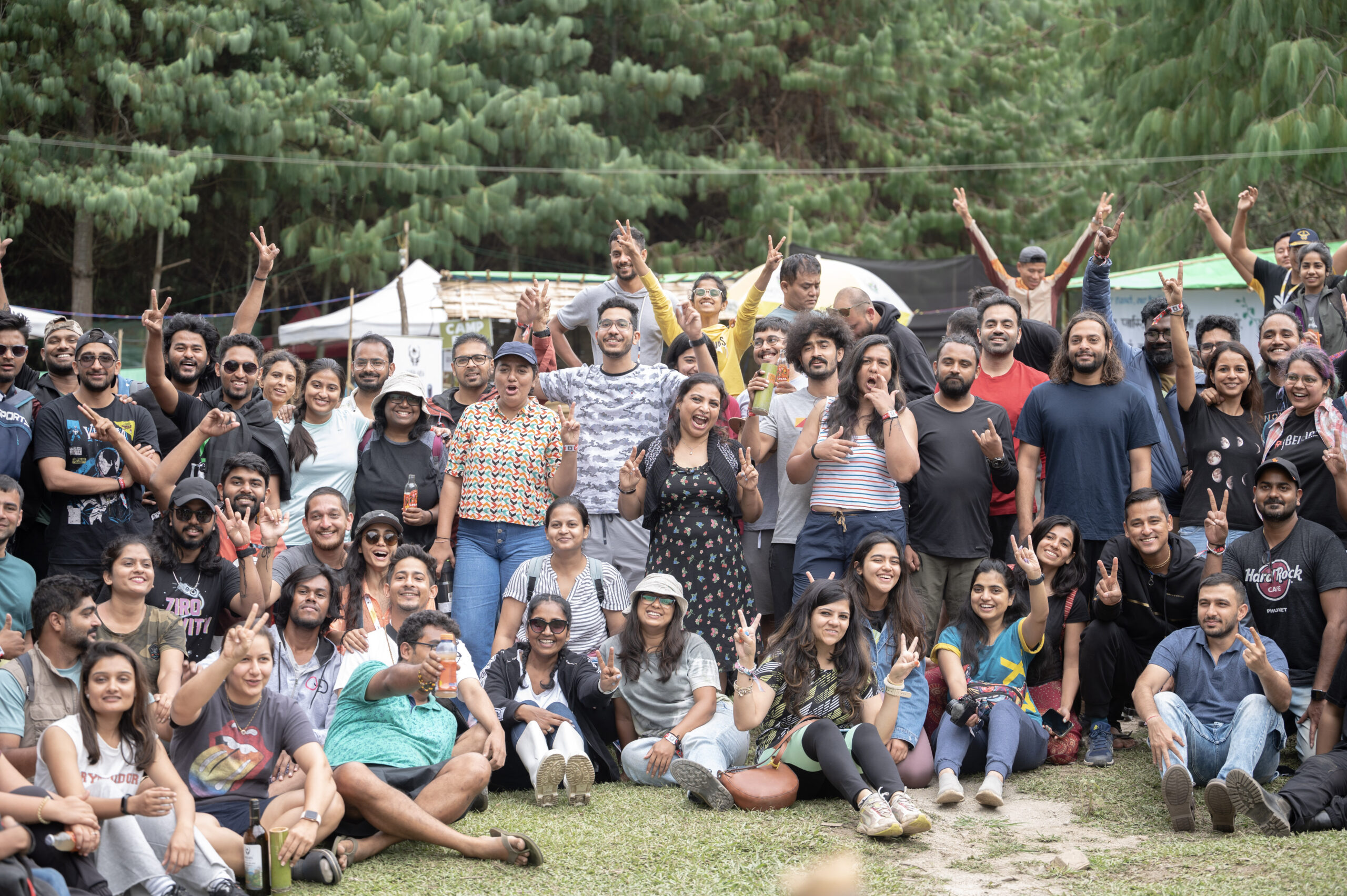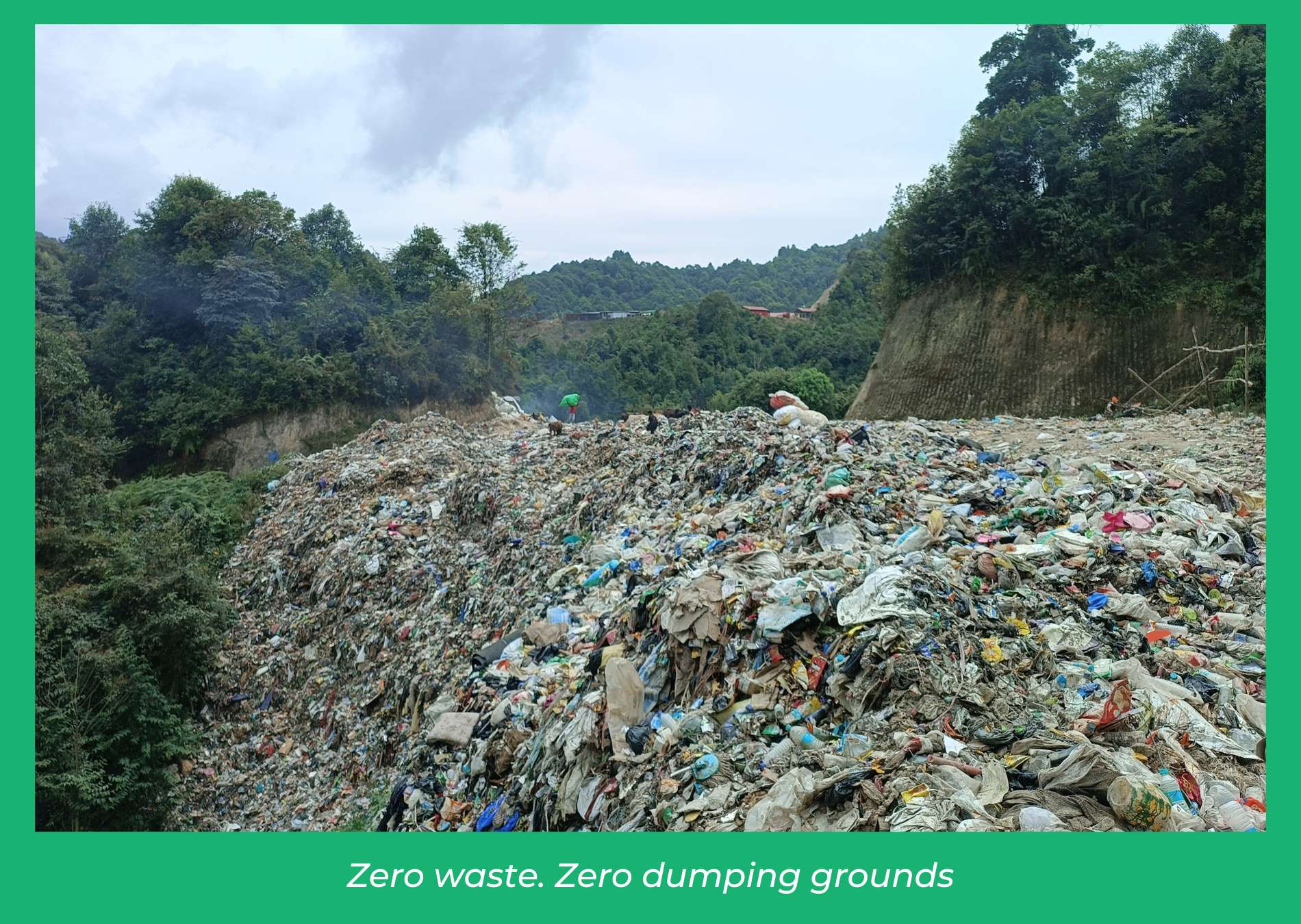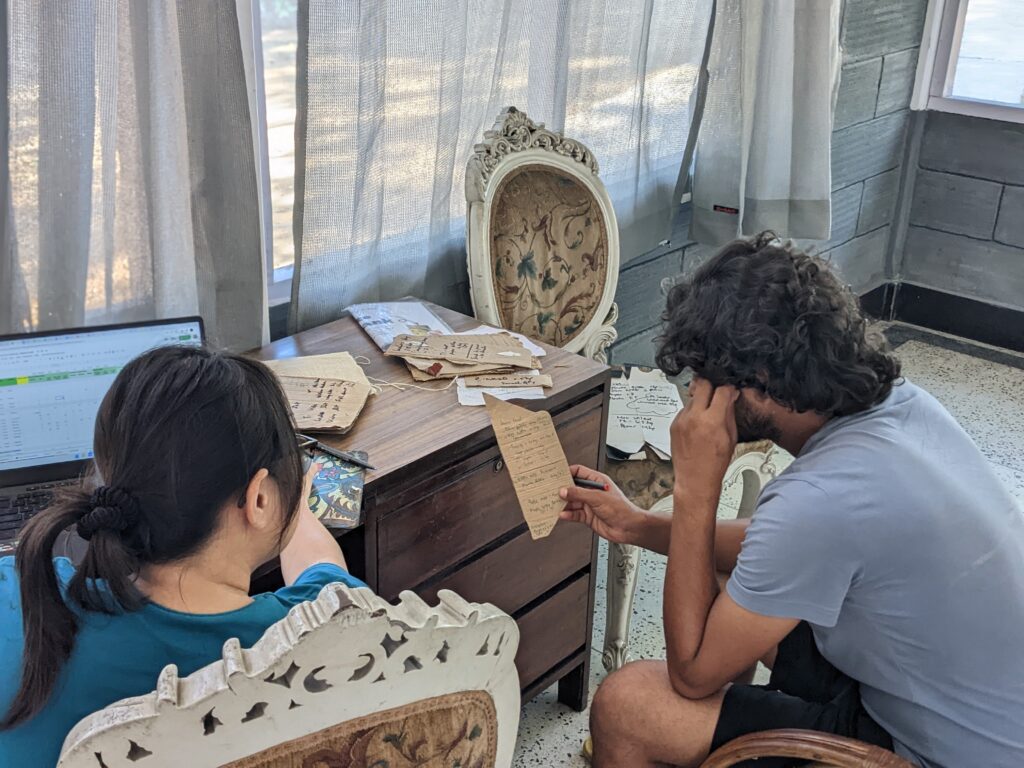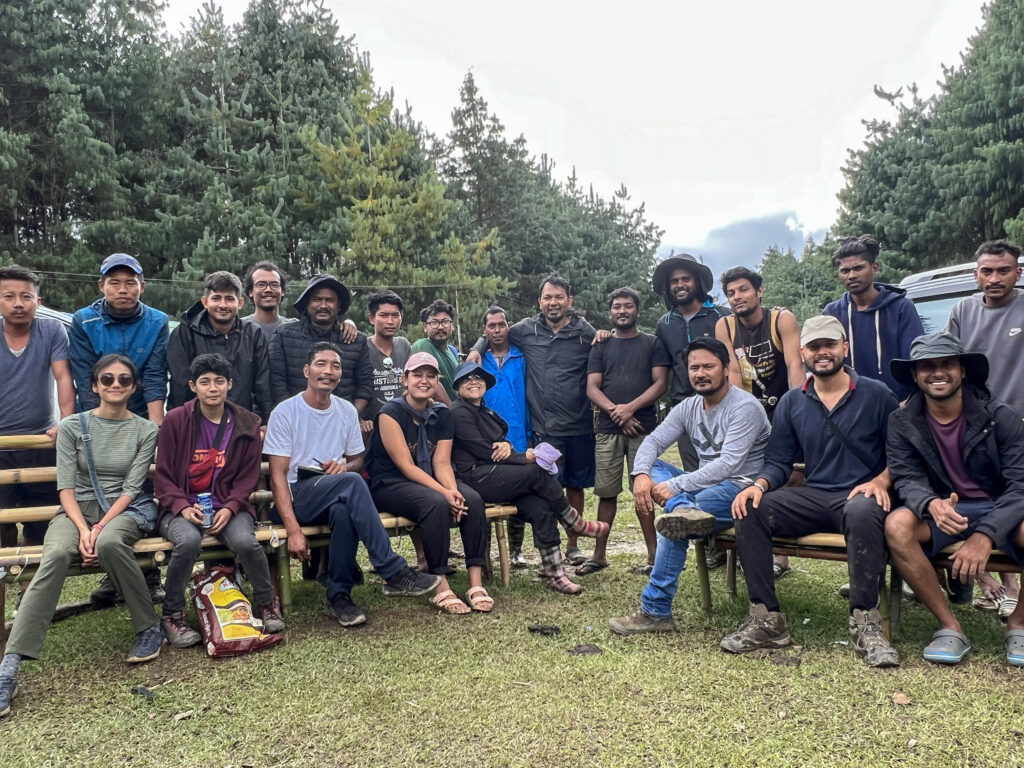20 min read

PHOTOGRAPH: © CHALOHOPPO
Continued from Part I. Want to know more about pre-planning stages of our CampOne waste management plan? Read our previous blog here.
1. BEFORE THE EVENT
As one of the oldest and most trusted camping operators supporting guests during the Ziro Festival of Music, we take pride in providing the best possible experience to those who visit. From transport to permits, stays to meals, and local activities, we have been doing our best to ensure that guests have a comfortable and memorable stay, not just during the festival, but throughout their time in the region. It is our love for the region that drives us, not the festival itself.
Last September, we decided to take the campsite experience to the next level by collaborating with other quality operators and bringing a new level of luxury to our site. We recognised the increasing number of visitors to the region and understood that without conscious intervention, the sudden increase in tourism could have a significant impact.
Waste management became one of our key focus areas, and we planned every step in advance. With the whole team on board, work was in full swing, and we were ready for guests to arrive and see how the next few days would unfold.
In this blog, we’ll take you through our step-by-step process of waste management, from pre-setup to the final clean-up. Join us as we share our experience of achieving one of the biggest zero-waste events in Northeast India and how we went above and beyond to make our guests’ stay a truly authentic and unforgettable one.
– – –
SET THE RIGHT TONE: We made sure to drive home the point of being eco-friendly at our campsite event, emphasizing the importance of packing consciously and avoiding single-use plastics, as we all have a part to play in leaving no trace behind. We put a lot of effort into our communications – from sharing our Responsibility Policy, sending emails and WhatsApp messages, to creating a perfect playlist for the journey with voiceover messages and the Welcome Kit we provided. Every message and note paid off!
STOP BURNING : In remote locations, it is a common practice to burn waste, which is often done by both locals and well-intentioned organizers. This is often due to a combination of “out of sight, out of mind” thinking and a lack of knowledge on how to properly dispose of waste. This results in even biodegradable materials like grass and bamboo being burned! On the other hand, plastic and synthetic materials are burned, releasing toxic chemicals that can harm the air, soil, and water of the area.
These picture was taken outside of CampOne. It’s been observed that burning non-biodegradable waste is a common practice among locals and at campsites
COURSE CORRECTION
RETRIEVE LEGACY WASTE : Legacy waste left behind by previous campers or visitors can have a lasting impact on the environment, particularly when it comes to micro plastics. Even materials marketed as “biodegradable” can take years to break down and can cause harm to soil and local agriculture. It is important to take the time to properly retrieve and dispose of all legacy waste to prevent further damage to the ecosystem. And so we did!
We recovered 31 kgs of legacy waste from the site before the event, including over 118 metal cans, 77 plastic bottles and over 10 kgs of paper and plastic related waste! Read our Audit Report for details.
CAMPSITE CONSTRUCTION & PLANNING
SITE PLAN FOR EFFECTIVE WASTE MANAGEMENT : To ensure effective waste management at the campsite, a comprehensive site plan was created. The plan focused on segregating waste and positioning waste disposal setups in key locations throughout the campsite, especially in common areas like the kitchens, dining area, bonfire area, and bathrooms, as well as the walking routes between them. Material recovery sheds were positioned keeping in mind both, ease of operations and visually present for guest interaction.
CONSTRUCTION MATERIALS USED : Our team considered whether the materials could naturally biodegrade, be collected after the event, or be recycled and reused. To avoid plastic waste, we chose jute ropes instead of the commonly used plastic ties in the area. The bathrooms were constructed using bamboo, and we designed them to enhance the user experience with quick drainage and cleanliness. One could say it was even self-cleaning! Our guests loved the design!
SETTING UP AN ON-SITE MATERIAL RECOVERY FACILITY (MRF) : To handle the waste generated within our campsite, we established a centrally located MRF. This is where we oversaw the cleaning of soiled plastics, segregation of material, weighing and auditing, and storage of all materials.
BIN LOCATIONS & DESIGN
STRATEGIC BIN LOCATIONS & DESIGN STRATEGY : To make our waste management system more effective, we placed the bin stations strategically in high-traffic areas for easy access and visibility. Our bin design was intuitive, prioritizing both guests’ engagement and material recovery efficiency.
Our Zero-waste team has experienced that the simplistic 3 colour-coded bin systems (found in many public spaces) have their limitations, as guests often don’t know which waste to add to which bin. This resulted in the operations team spending an inordinate amount of time sorting the waste and risking sanitary waste contamination. Moreover, if any liquid or food is added to dry waste, it soils all the dry waste. To address this dual challenge, we designed a few special bins specifically keeping camping activities in mind.
SETTING UP OUR BOTTLE BANK : The bottle banks played a crucial role in reducing our segregation efforts. They were divided into three sections – aluminium cans, plastic bottles, and glass bottles. The best part? Our guest campers actively participated in segregating the waste and placing it in the respective sections.
We collected a total of 1700 bottles through our bottle banks : more than 175 kgs through bottles during the 4 day event alone! Read our Audit Report for details.
DRY WASTE SACKS : The sack stands were made of construction waste bamboo, modular in design, and thus quick to make and install and light on the budget! It did take a few prototypes to get to an optimum design.
CIGARETTE BUTT BANKS : Cigarette filters are plastic fibers that leach toxic chemicals into our soil, they are also painful during litter-picking sessions. On the other hand, if collected well, we can send them for recycling, during which the toxic chemicals are safely disposed of and the fiber is used to make new products. (check Code Effort’s efforts to know more).
We collected 1 kg worth of cigarette butts! Want to put this weight in perspective? A single cigarette butt, on an average, weighs only 0.17 gm - making a kilogram more than 5,800 cigarette butts collected in a span of 4 days in one campsite only!
HANDY NEWSPAPER POUCHES FOR SANITARY WASTE : Recycling newspapers to make bags for sanitary waste and condoms was a solution we implemented to reduce the hazards faced by our waste management team. We understood that guests may not always be aware of what constitutes sanitary waste and that used wet wipes and condoms need to be disposed of in sanitary waste as well. But this waste gets generated in a tent and not washrooms, so what do we do? We placed newspaper pouches throughout the campsite, on trees, and on bamboo posts near the tent areas, making them easily accessible to all campers and boy, were they used! 😛
A total of 12.5 kg of biomedical waste was collected and sent for incineration at a biomedical waste facility in Guwahati from Ziro. Check our Audit Report for more details.
WASTE REDUCTION STEPS
NATURAL CLEANERS & SOAPS : For all hand washing, we used natural soaps made with soapnut (reetha). The kitchen team used a mixture of bio-enzyme pulp and wood ash and the washrooms were cleaned with bio-enzyme solutions. Bio-enzmes are made from natural sources such as fruit and vegetable peels and contain beneficial microorganisms that help break down organic matter, making them safe and beneficial cleaning solutions and a great alternative to chemical-based cleaning solutions.
REUSABLE BANNERS & SIGNAGE : Reusable banners and signages were chosen to reduce waste generated from single-use paper or plastic signs. The use of durable, high-quality materials such as vinyl and cloth made it possible to reuse the banners and signs for multiple events.
FINAL TEAM ORIENTATION: We attempted that team members received specific orientations tailored to their roles. Upon their arrival, the kitchen team and volunteers were briefed and oriented to take ownership of their roles and address any concerns they had. We also welcomed their feedback and made tweaks to our operation plan based on their suggestions. Our goal was to equip them with the knowledge and skills necessary to carry out their roles without impeding their primary responsibilities.
2. DURING THE EVENT
REUSABLE CUTLERY & BAMBOO GLASSES: We’ve always avoided disposable cutlery at our campsites and to do so we make sure our caterers are on board with this decision upfront. This not only helped us cut down on waste but helped us avoid feeding disposable cutlery to the cows. Local rice beer was served in bamboo glasses. We were impressed that over 80% of our guests held on to their bamboo glasses, washing and reusing them every day.
INTERACTIONS & ENGAGEMENT
WORKSHOPS & LOCAL ASSOCIATIONS VISIT : We organized hands-on workshops on zero-waste lifestyles and provided guests with an understanding of the thinking behind the systems in place during the event. We were thrilled that so many guests took an interest in these workshops, taking time out from the music festival to participate. We also had visits from local associations, and we proudly shared details of our strategy with them.
INSPECTIONS & QUICK ACTIONS
We attempted to inspect all our bins twice a day to observe user behaviour and identify any limitations of our arrangements. We also used this opportunity to make any necessary course corrections through signages or re-arrangement of bins. We believe that the broken window theory applies to waste management, and we wanted to ensure that the bins are well maintained to continue to encourage appropriate behaviour. It was probably also fun because our youngest camper – 3 years old Nia easily became our chief inspector!
SUPPORT KITCHEN TEAM
We supported the kitchen team in waste management by facilitating segregation and collection setup, taking their input on bin positions, and making iterative changes. The team appreciated our efforts and even enjoyed feeding the cows!
LITTER PICKING (- the thing that never needed to happen!)
We are so happy to share that there was none to minimal litter to be picked up during the event. It’s a wonderful accomplishment that speaks to the success of the system design and the impact of effective communication and engagement with guests.
MATERIAL SEGREGATION & AUDIT
All bins were emptied, segregated, weighed, and recorded each day. We appreciate the guests and organizing team members who volunteered in the process, making it a community event.
HANDLING FOOD WASTE
COW FEEDERS : Another creative solution was to factor in the local stakeholders including cows and accommodate them in a way that both prevented them from entering our camping areas but also directed them to our cow feeders, a dug-up pit with thatch roofing. This was important because cows are an important part of the local ecosystem and we wanted to be respectful of their presence. The cow feeders allowed them to have a feast and the remaining food was composed.
Food waste accounted for more than 50% of all event waste at our camp (in kg) - we're just glad we could share the joy through organized cow feeders!
3. AFTER THE EVENT
As the guests left, the rains came in, making our last and most important step much harder than we planned for!
MATERIAL RECOVERY FOR REUSE
Any items that could be recovered and reused were saved. We removed all the banners and signage that were put up during the event. Other items included washroom screens, wooden signboards, blackboards and reusables that were still in good condition.
POST-EVENT SITE CLEAN UP: After the event, we made sure to thoroughly clean up the site — all the items left behind by the campers were further segregated and factored in on our waste audit. Thank you to those that left their tent clean and did not leave behind mixed waste!
SOILED WASTE LAUNDRY! : The next line of waste segregation was to happen at the aggregation facility in Guwahati. While the waste could be accepted in any condition, we made sure to rinse plastic with food particles and muck to remove foul smell and avoid further contamination in the recovery process.
FINAL BIN COLLECTION & WASHING: We took special care to pack the sanitary waste separately and ensure that all the bins were thoroughly cleaned and disinfected.
FINAL ON-SITE AUDIT
Even after the event was over, we continued to audit new waste from the packing and from the organizers’ offices to ensure that we were still following sustainable practices and minimizing our impact on the environment.
4. THE LAST MILE
What if, after all of this, we threw the waste into another dump yard? Make another spot in the back of beyond dirty? Or burn it? Don’t worry! We would not be writing this blog if that’s where our story ended. Here’s how we ensured that our waste went that last mile :

LOCAL WASTE COLLECTORS: We coordinated with local scrap collectors to facilitate the reuse of materials wherever possible. To our surprise, we found that no scrap dealer in Ziro collects glass or glass bottles – a material that is infinitely recyclable. We wonder why!? This meant an additional of 175kgs of bottles were going to be taken back to Guwahati!
TRANSPORTATION TO PRIVATE WASTE AGGREGATOR : On the final moving day, we packed all our waste from the campsite and loaded it in our transportation truck. Our earlier coordination with The Midway Journey (the only waste aggregator in the region that accepts this type of waste), was crucial in ensuring that we were able to send our waste to a facility that maintains high safety standards and carefully selects recycling partners. All sanitary waste was sent to biomedical waste incinerators at Gauhati Medical College and Hospital.
The recycling industry is characterized by significant disorder and a lack of transparency. The Midway Journey and similar organizations strive to increase transparency in this field.
FINAL WASTE AUDIT RESULTS


As part of our commitment to creating a zero-waste campsite, we conducted a thorough waste audit to quantify and analyze the waste generated during the event. The goal is to bring transparency and accountability to our actions and inform future waste reduction strategies.
Overall, the total waste generated at the campsite was 683 kg, of which we responsibly managed 657 kg of waste - 96%! This is a significant achievement and a testament to the efforts of everyone involved in this initiative.
The waste audit also provided valuable insights into the waste generated per person – 2.7 kg and the number of bottles wasted per person was 6.8 bottles, thanks to all the bamboo glasses for rice beer and guests who carried refillable water bottles! For more details, feel free to review our waste audit!

IMAGE: A SMALL PORTION OF OUR HUGE TEAM!
Special thanks to Eureka Khong for her help and support in putting this article together and sharing her well-organized visual documentations of CampOne.
Our waste management would not have been possible without the beautiful collaboration between Tieedi Forest Gardens, Aspiration Zero, North East Waste Collective and The Midway Journey.
Our team of over 30 hard-working and talented individuals who made it to Ziro from all across the North-East of India – our volunteers, activity guides, camp managers, production specialists, operational leads and of course, our local camping partners and our guests who actively helped us out in every possible way! We are proud and privileged to be able to come together on such a large scale.
And we are only just getting started.
LOVE, TEAM CHALOHOPPO

